Germanisches Nationalmuseum (German National Museum), Nuremberg
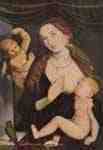
Madonna with the Parrot, Hans Baldung Grien

Sebastian Altar: The Martyrdom of St. Sebastian, Hans Baldung Grien
 Emperor Charlemagne, Albrecht Dürer
Emperor Charlemagne, Albrecht Dürer
 Portrait of Emperor Sigismund, Albrecht Dürer
Portrait of Emperor Sigismund, Albrecht Dürer
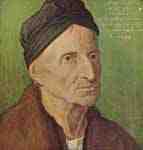 Portrait of Michael Wolgemut, Albrecht Dürer
Portrait of Michael Wolgemut, Albrecht Dürer
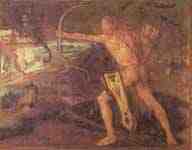 Hercules and the Stymphalian Birds, Albrecht Dürer
Hercules and the Stymphalian Birds, Albrecht Dürer
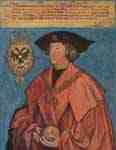 Portrait of Emperor Maximilian I., Albrecht Dürer
Portrait of Emperor Maximilian I., Albrecht Dürer
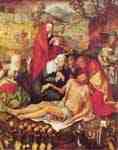 Lamentation of Christ, Albrecht Dürer
Lamentation of Christ, Albrecht Dürer

Portrait of a man, Jan Joest van Kalkar
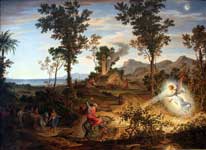
Landscape with Bileam, Joseph Anton Koch

Portrait of the Court Musician Josef Lemberger, Jan Kupecký
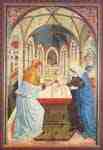
Presentation in the Temple, Master of the Pollinger panels

Madonna with the pea blossom, Master of Saint Veronica
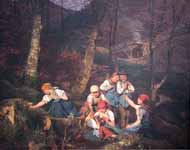
Children playing in the Forest, Ferdinand Georg Waldmüller
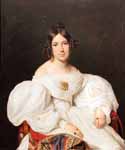
Portrait of Louise Mayer (born Feldmüller), Ferdinand Georg Waldmüller
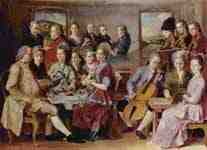
The Remy Family, The Remy family. Januarius Zick
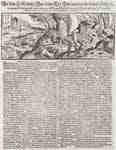
Two murderers in Moravia and their execution, Georg Jacob Daschitzky
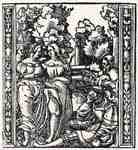
Judgment of Paris, Peter Flötner
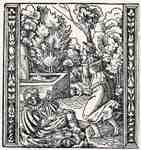
Pyramus and Thisbe, Peter Flötner
The Germanisches Nationalmuseum is a museum in Nuremberg, Germany. Founded in 1852, it houses a large collection of items relating to German culture and art extending from prehistoric times through to the present day. With current holdings of about 1.2 million objects, the Germanisches Nationalmuseum is Germany's largest museum of cultural history.
Formerly the Germanisches Museum, it was founded by a group of individuals led by the Franconian baron, Hans von und zu Aufsess, whose goal was to assemble a "well-ordered compendium of all available source material for German history, literature and art".
The buildings incorporate the remaining structures of the former Nuremberg Charterhouse, dissolved in 1525 and used for a variety of secular purposes until in 1857 what was left of the premises, by then badly dilapidated, was given to the Museum.
Name, establishment, guiding principles
The inscription „Eigenthum der deutschen Nation“ ("Property of the German Nation") at the main entrance was installed when the museum was founded in 1852, and was commissioned by Hans von und zu Aufseß
The name of the museum, Germanic National Museum can be understood from the historical context of the mid nineteenth century. In 1846, German linguists and historians, amongst them the Brothers Grimm, Leopold Ranke und Jacob Burckhardt, met in Frankfurt, and decided to attribute the term "Germanistik" to their scientific discipline. The name of the museum represents the idea of a close cultural relationship within a region defined by the common German language, and a shared German cultural tradition. Founded in 1852, the intention of the museum was to document the cultural unity of the German-speaking areas in view of the failed German revolutions of 1848–49. In the mid nineteenth century this was not conceived as an exaggerated patriotism, but was instead a progressive concept.[1]
The museum understands itself as an important research and educational institution. As a national museum and a museum of the entire German-speaking region the German National Museum collects and maintains cultural, artistic and historical testimonials from the beginning of history to the present. As a research and educational institution of international standing, the collections, exhibitions and publications present the cultural history of the German-speaking countries in an international and interdisciplinary approach. The work of the institution is guided by the principle of respect for all cultures, so that all human beings can understand what the museum communicates, independent of their upbringing, education, and religious beliefs.[2]
Structure and organization
Grand Cloister of the former Carthusian monastery, today part of the museum buildings
Associated to the museum are Archives, like the German Archive of Art, libraries, a special department for restoration and conservation (Institut für Kunsttechnik und Konservierung) and an educational center. The museum also administrates the Collection of Children's Toys at St. Lorenz's parish, the Museum of the Emperor's Castle at Nuremberg Castle, as well as the Neunhof Palace, a Manor house located north of Nuremberg with its collection of hunting weapons and tools. The museum is organized as a public foundation since 1921. Since 2 July 1954, companies and individual persons (the "Fördererkreis") are invited to support the museum's activities.
As a research institute, the GNM conducts scientific and historical research on the material provided in the collections and archives. The research results are made public in scientific journals and exhibitions. Different long-time research projects are ongoing at the museum, including the "Schrifttum zur Deutschen Kunst" (German Art Literature project), and the Hessian Renaissance Stately Homes Online Catalogue.
History of the museum
Buildings
Courtyard of the Carthusian cloister at the time of the foundation of the GNM, 1852
The museum constitutes an architectural monument in itself, as it is distributed over a variety of buildings erected in different periods. Its main building is the late medieval Carthusian charterhouse[3] Since 1857, the charterhouse belonged to the museum buildings. It has been rebuilt and modified to accommodate the collections during the late nineteenth century, but the architectural structures from this time were not preserved. Specially planned exhibition buildings still exist from the first decades of the twentieth century: The „Alter Eingang“ ("Old Entrance"), Lapidarium, and the "Galeriebau" (Gallery building). After the Second World War, the architect Sep Ruf designed additional buildings; historical parts of the halls and galleries were adapted to the new architectural concept or torn down after their destruction during the war; only some buildings were restored and rebuilt. The first major building was added 1955–1958, called „Heussbau“ after the first president of West Germany, Theodor Heuss. In 1983, and from 1988–1996, the museum was substantially enlarged. The new "Karthäuserbau" was designed by Jan Störmer. In 1999, the 1910 building of the St Lorenz's parish children's home was acquired. It was restored in 2002, and is now the home for the Collection of Children's Toys.
Collection
Cloth of St Gereon, a fragment they have in their inventory. It happens to be the oldest European tapestry still existing.
Portrait of Barbara Dürer, part of a portrait diptych by Albrecht Dürer
Lamentation of Christ, also attributed to Dürer
Germania, painting by Philipp Veit
The drinker - selfportrait, painting by Ernst Ludwig Kirchner
References
"GNM FAQ (English)". Retrieved 14 August 2015.
"GNM -"about us"". Retrieved 14 August 2015.
Jörn Bahns, Die Museumsbauten von der Übernahme der Kartause im Jahre 1857 bis gegen 1910 – History of the museum buildings from the takeover of the Charterhouse to around 1910 In: Deneke/Kahsnitz (Ed.) 1978, p. 357
----
Fine Art Prints | Greeting Cards | Phone Cases | Lifestyle | Face Masks | Men's , Women' Apparel | Home Decor | jigsaw puzzles | Notebooks | Tapestries | ...
----
Artist
A - B - C - D - E - F - G - H - I - J - K - L - M -
N - O - P - Q - R - S - T - U - V - W - X - Y - Z
Retrieved from "http://en.wikipedia.org/"
All text is available under the terms of the GNU Free Documentation License


